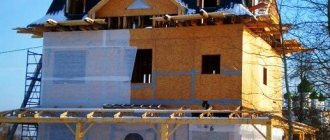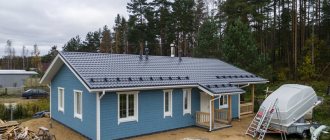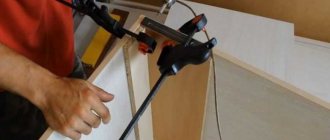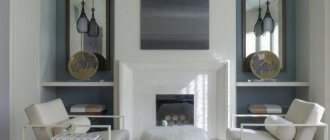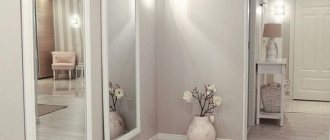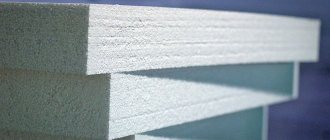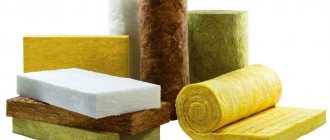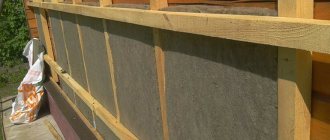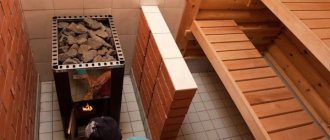Why do you need Izospan for walls?
In almost any scheme for insulating a wall surface, the material must be laid in sheets or panels. With the exception of ecowool and polyurethane foam sprayed onto the walls. It is clear that, no matter how hard the master tries to tightly lay sections of thermal insulation on the wall, there are still joints, seams and points for attaching sheets. In these same places, water vapor actively penetrates into the thickness of the insulation, which subsequently condenses and forms cold bridges. In addition, almost all types of thermal insulation, except for EPS, have a certain level of vapor permeability, which is why moisture accumulates in the thickness of the walls and the process of degradation of the insulation begins. Therefore, insulation must be installed with parallel laying of Izospan or materials similar in characteristics to it on the walls.
In general, wall cladding with Izospan, depending on the brand of canvas, provides:
- Protecting the wall from the penetration of water vapor into wooden parts and into the thermal insulation layer;
- Waterproofing when laying on the outer surface of walls;
- Insulation when laid in several layers.
In fact, under the Izospan brand, several types of insulation are produced based on polypropylene film and non-woven fabric, structured polyethylene fabric with a film base and fiberglass.
For your information! Structurally, Izospan is a kind of sandwich of several types of materials with different properties. Therefore, regardless of the brand, it always matters which side is the correct way to lay isospan on the walls. Otherwise, you can get the completely opposite effect.
Some types of membranes are capable of transmitting only warm water vapor, but are less resistant to supercooled moist air and liquid moisture. In this case, Izospan can be laid and used as insulation for walls, but cannot be used for waterproofing. Other brands, for example, Izospan B, are completely vapor-tight and highly resistant to water pressure. Therefore, in any case, before use, you need to study the material, determine which side is the front side and which is the supporting side. The manufacturer always indicates on the packaging the side markings, the composition of the material, and even indicates on the panel the markings of the overlap lines when laying on the walls.
Vapor barrier for the walls of a frame house, insulation is laid from the inside of the room
Technical indicators
Even at the construction stages, you can form a barrier designed to ensure heat conservation by using Izospan in the construction of vapor barrier. There are several types of this material. The film is presented in a large assortment and differs in its purpose. Vapor barrier films and membranes are capable of completely or partially allowing moisture and air to pass through on one side. Some modifications are used to enhance the characteristics of basic materials.
What characteristics does Izospan have:
- waterproof;
- elasticity, due to which the material can take any shape;
- resistance to ultraviolet rays of the sun;
- resistance to various atmospheric phenomena;
- no toxic compounds in the composition, and therefore safe for human health. no harm to the environment.
- ability to withstand minor temperature changes;
- fire safety due to fire-resistant elements added to the composition.
Various areas of application are envisaged for Izospan. The main area remains the construction area. The material has:
- unique structure;
- own labeling;
- individual technical characteristics.
Manufacturers use letter designations for various modifications of Izospan. Sometimes these indices are combined in a number of models, thereby creating diversity in terms of installation and scope of application of Izospan.
Which Izospan to use for walls outside and inside the house
The range of vapor-waterproofing membranes includes more than two dozen types of materials, each of which has an individual structure and is used to solve specific problems.
In simplified terms, the purpose of membranes can be described as follows:
- Hydro- and windproof vapor-permeable materials. Izospan “A”, “AM” are used for external protection of the walls of the house, AQ, AS membranes are used to protect the roof from the accumulation of condensate. According to the instructions for using Izospan A for walls, the protective fabric blocks air convection through the insulation, while at the same time having high strength to withstand mechanical loads due to gusts of wind;
- Membranes of grade “D” are used as a vapor barrier and to protect insulation and load-bearing structures; they are laid on the wall from the inside of the building. Can be used to protect against under-roof condensation; the standard use of Izospan D is laying on walls and covering the ceiling from inside the building;
- Brand “B” canvas is used to protect against falling condensation on wooden walls and ceilings from inside the room. The material is impervious to steam and condensation, therefore Izospan is recommended for interior decoration of the walls of a frame house.
Brand “A” membranes are a polypropylene fiber structure that easily allows air to pass through, but blocks the movement of vapors. The denser AM fabric is reinforced on both sides with a polypropylene lining made of non-woven material. Izospan is recommended for walls outside a wooden house when laid on top of mineral wool-based insulation.
Izospan grade “B” is a two-layer material based on film and polypropylene fabric. It is easy to distinguish by the appearance of the sides: one of them is smooth and is designed to protect against liquid moisture, the second is rough, with anti-condensation properties.
Material grade “D” is a very durable woven polypropylene fabric with pronounced anti-condensation surface properties. A protective coating on the surface of the polypropylene membrane prevents supercooled water vapor from condensing. Due to special impregnation, any moisture that gets on the surface of the wall does not wet the canvas, but automatically rolls down.
Which Izospan should I use for bath walls?
For the steam room, reflective vapor barrier of the “FB” brand is used. Essentially, it is thick craft paper with a metallized Mylar film applied on one side. The paper can withstand prolonged heating up to 140°C without burning or destruction of the structure. Laying on the walls is carried out with a metallized surface inside the room.
The outer walls of the bathhouse are lined with Izospan A. Inside the room, especially if thermal insulation based on mineral wool was used in the walls, it will be necessary to line it with a vapor barrier of grade “B”.
Izospan positions: characteristics and application features
has developed a wide range of vapor barrier membranes. Without construction experience, it is difficult to navigate the choice and determine the optimal material. The main selection criterion is the purpose and scope of use. Conventionally, all types of film insulation can be divided into three categories: hydro- and wind protection, vapor and waterproofing, reflective materials to increase heat conservation.
Range of wind-waterproofing membranes
This is a hydro-wind barrier that protects insulation and structural elements from wind, condensation, and moisture from the outside. At the same time, the materials allow steam to pass through - moisture does not accumulate in the thermal insulation layer, but is ventilated into the atmosphere.
The product line is represented by the following positions:
- Izospan A. Density – 100 g/sq.m. m, vapor permeability – more than 2000 g/sq. m/day. The effect of the membrane is that moisture quickly comes out, but does not seep inside. Installation on the outside of the heat insulator, under the cladding, requires a ventilation gap .
- Izospan AM. Density – 90 g/sq.m. m, vapor permeability – from 800 g/sq. m/day. A three-layer membrane, installation without a ventilation gap is acceptable - air circulates in the spaces between the film layers.
- Izospan AS. Technical indicators: density – 115 g/sq.m. m, vapor permeability – 1000 g/sq. m/day. Three-layer diffuse material, more tensile resistant than AM type.
- Izospan AQ proff. Reinforced material with a density of 120 gsm. m – three-layer structure with reinforcement. The film resists mechanical damage and UV rays well. Izospan AQ is indispensable for protecting the insulation of roofs and walls if the structures will be without an external coating for some time.
- Izospan A with OZD. A membrane with fire retardant additives is recommended if welding work is planned near the insulation.
Useful: Plasterboard ceiling: do-it-yourself cladding
The listed wind protection films are applicable for the construction of frame walls, ventilated facades, and thermal insulation of pitched roofs with a slope of 35° or more.
Overview of hydro-vapor barriers
This category is intended to protect internal structures from moisture . Scope of application:
- installation of an insulated roof - suitable for flat or pitched roofs;
- waterproofing of floors - films are suitable for protecting the base, under laying laminate, for floors in a wooden house;
- hydrobarrier of attic, basement, interfloor ceilings.
Characteristics of Izospan hydro-vapor barrier:
- Izospan V. Two-layer film, density – 70 g/sq. m., water resistance – more than 1000 mm water. Art. The material is in demand due to its universal properties and affordable price. The membrane acts as a vapor barrier for indoor walls, for ceilings with interfloor and basement floors and attics under a thermally insulated roof.
- Izospan S. Density – 90 g/sq.m. m. The scope of application is similar to type B film; it can be used for concrete floors.
- Izospan D. High-strength woven material, density – 105 g/sq.m. m. Izospan D can withstand significant mechanical loads. The main purpose is waterproofing the base of the floor, flat/pitched roof, and basement floor. Suitable for use as temporary roofing.
- Izospan RS/RM. Three-layer insulation reinforced with PP mesh, density – 84/100 g/sq. m respectively. Application – arrangement of a hydro-vapor barrier for ceilings, floors, wall ceilings, roofs of any type.
During production, high-strength canvases of the D, RS, RM series are coated with water-repellent compounds. Hydrophobic films can be used as a waterproofing material when installing cement screeds on concrete and arranging earthen floors.
Thermal reflective materials
Reflective hydro-vapor barrier with a heat-saving effect - complex films with a metallized coating. The canvases simultaneously protect the internal roof structure, insulation, ceilings and walls from wet vapors from inside the house, and also reflect thermal radiation back into the room.
Options for Izospan coatings differ from each other in composition, which determines the scope of their application.
Popular markings:
- FB – construction cardboard with lavsan coating and aluminum coating; used for cladding walls/ceilings of baths;
- FD – polypropylene fabric + metallized coating, the material is suitable for installation of water/electric heated floors;
- FS - similar in composition to FD, but here there is a double metallized film; used as a heat and vapor barrier for a sloping roof;
- FX – canvas base – foamed polyethylene + metallized lavsan film; scope of application – substrate for laminate, hydro-vapor barrier for walls, attic, ceilings.
The thermal reflection coefficient of Izospan sheets reaches 90%
Which side should Izospan be placed against the wall?
Now the most important thing is to choose the right direction for laying the vapor barrier. Each brand of membrane has its own defining feature, which helps not to confuse the side that needs to be applied to the wall. Most often this is the color or texture of the membrane surface.
In accordance with the instructions for using Izospan A for walls, the membrane is applied with a rough surface to the sheathing or on the insulation. The smooth side should, as they say, “look at the worker.”
Further, according to the instructions for using Izospan AM for walls, the color of the material is used to determine the outer and inner sides. The AM brand membrane has a beige or gray colored fabric on one side and white on the other side. For external wall insulation, Izospan must be mounted on the sheathing with the white or light side facing the thermal insulation. The painted side will be the front.
Izospan “B” in its structure resembles grade “A”, with the only difference being that it is used for arranging a vapor barrier for walls from the inside, from the inside of the room. One side of the membrane is smooth, the other is fleecy. You need to install Izospan B with the smooth side facing the wall.
Vapor barrier grade “D” is used to protect uninsulated walls from exposure to humid and supercooled air. A distinctive aspect of Izospan is its high strength and good waterproofing qualities. One side of the panel is made of woven polypropylene fiber; it is easily recognized by its characteristic surface texture. The second side is smooth, has a laminated coating of polypropylene film. Waterproofing should be installed on walls with the woven side facing inward and the smooth surface facing outward.
Izospan vapor barrier installation technology
The method of laying insulating membranes is determined by the scope of their use. Before work, you need to study the instructions and understand which side to install the vapor barrier to the insulation.
Arrangement of frame walls
On the outside, the insulation needs hydro-wind protection, and on the inside, a vapor barrier. Therefore, for work you will need two types of membranes :
- Izospan A or alternatives: AS, AQ Profi, AM;
- Izospan B or RS.
The general diagram of a wall pie looks like this:
- External cladding.
- Cottrogrid.
- Hydro-wind barrier – Izospan A.
- Thermal insulation layer.
- Vapor barrier – Izospan V.
- Internal finishing.
Izospan A is mounted on the frame on top of the insulation, the side of placement is not important. If the brands AS, AQ Profi, AM are used, then the white side faces the heat insulator. The panels are placed from top to bottom, horizontally with an overlap of 10 cm at the joints. They are fixed to the frame with a construction stapler.
Useful: Rockwool basalt insulation - optimal insulation for the frame
Vertical slats are attached on top of the hydro-windproofing film - the basis for the outer cladding. The lower edge of the membrane is fixed to the drainage drain of the base.
Instructions for use of Izospan B:
- Installation of the canvas from inside the room, on top of the insulation. Fixation to the supporting beams of the frame.
- The order of installation is from bottom to top, with an overlap of horizontal panels of 15 cm.
- Izospan B is placed with the smooth side facing the heat-insulating layer, the panels are fastened with connecting tape.
- The interior decoration is mounted on a slatted frame (lining, plywood) or galvanized profiles (plasterboard) - a ventilation gap of 4-5 cm should be obtained.
Wind and moisture barrier of pitched roof
For insulated roofing pie, Izospan A is used as a wind and water barrier. If fibrous material is used for thermal insulation of the roof, it must be protected from moisture from the attic or attic. A vapor barrier of RS or B brand will cope with this task.
General diagram of an insulated roof pie :
- Roofing covering.
- Izospan A membrane is a barrier against wind and precipitation.
- Counterrail.
- Insulation layer.
- Vapor barrier film – Izospan B.
- Rafter system.
- Interior decoration.
The wind barrier is laid with an overlap of 15-20 cm; the film strips should run without excessive overhang or tension. The membrane is fixed to the rafters with a stapler. Near the ridge, the top strip of Izospan is mounted with a bend towards the second slope. To create a ventazor, 40 mm thick slats are stuffed on top of the film.
The internal vapor barrier (Izospan V) is laid with the smooth part facing the insulation, the rough side “looks” into the room.
Attic insulation
The choice of membranes depends on the operating conditions:
- Protection of insulation between a warm room and an unheated attic from moisture and weathering - AM, AS, AQ Profi films. Laying with the white side facing the thermal insulation material, no gap required.
- Vapor barrier - installation from the room side. Films RS, C, DM or B are laid between the finishing and the rough ceiling with the rough side down.
Advice . It is advisable to install a ventilation gap between the vapor barrier layer and the rough ceiling - about 5 cm.
General diagram of the insulated floor structure:
- Attic floor.
- Hydro-wind barrier – Izospan brand A.
- Thermal insulator.
- Counter-lattice.
- Floor beam.
- Rough ceiling.
- Vapor barrier membrane grade B, RS.
- Ceiling finishing.
On the room side, thermally efficient insulation can be used, then the canvas is secured with the reflective layer down. In this case, a gap between the finishing and the film barrier .
How to properly install Izospan on walls
In most cases, the material is attached to the wall to the slats using a regular construction stapler. It makes no sense to use any additional plastic spacers, since the polypropylene woven base can easily withstand quite large mechanical loads.
If you plan to use Izospan when insulating walls according to a scheme with a ventilated facade, then the material is fixed in the following ways:
- Roll out onto the lathing with double-sided tape laid on top, after gluing on the overlap line, the panel is fixed with staples;
- The membrane is rolled out, simultaneously stretched and nailed through wooden slats.
The choice of method depends on the structure of the walls, the quality of the lathing, the presence of insulation and the type of decorative finishing.
Laying the membrane horizontally
Izospan D
Suitable for the construction of various types of structures . Able to withstand moderate mechanical loads well. At the same time, it demonstrates good tear resistance and withstands the effects of wind. In winter, it can cope with loads in the form of snow accumulated on the roof. It is considered one of the most reliable and durable options.
Its characteristics:
- completely impermeable to water;
- has high strength;
- has a laminated one-sided polypropylene-based coating.
What tools and materials will be needed
To install vapor barrier you will need a minimum set of tools and equipment:
- Cutting knife;
- Bench's ruler and tape measure;
- Construction stapler.
Consumable materials will need to be purchased: nails, staples, wooden slats and adhesive connecting tape of the “KL” brand.
Preparing the walls
There are no special requirements for preparatory work before laying vapor barrier. If you plan to lay the canvas on a wooden sheathing, you will need to check the surface for protruding chips and chips, or any defects that could damage the membrane.
In other cases, it is enough to clean and remove dirt from the walls. Otherwise, the ability of the membrane to transmit steam may be reduced due to clogging of the surface with small debris and dust.
How to properly lay and attach Izospan to the walls
The procedure for installing vapor barriers on lathed walls has long been worked out by material manufacturers and even improved in some ways by builders.
The installation process for Izospan A or D is as follows:
- We check the readiness of the lathing for laying the material, take the dimensions of the walls and calculate the length and number of panels in one roll;
- We roll out the Izospan, choose which side to mount, lay it on the sheathing with an overlap and fix it with a stapler on one side;
- We stretch the fabric and sew it evenly with staples along the wooden bars of the sheathing;
- Roll out the next panel and lay it above the previous one with an overlap of at least 15 cm;
- We lift the lower edge of the new canvas and roll out the sealing adhesive tape, press the edge into place and secure the laid row of Izospan with staplers;
- We cut out the wooden slats of the counter-lattice according to the height of the wall, and nail them into the vapor barrier.
If laying Izospan on the wall is carried out without insulation or is finished with decorative plaster, then before starting work the wooden parts are treated with varnish, laying the panel on the wall is done only with double-sided tape or KL+ tape, with further filing with a stapler.
Specifications
Characteristics of isospan B,C,D,DM:
Characteristics of isospan FB,FD,FS,FX:
When choosing vapor barrier materials, you need to pay attention to the following parameters:
- Vapor permeability.
- Strength.
- Density.
- Water resistance.
- UV stability.
Isospan A has the highest vapor permeability (3000 g/m2/day), but it has the lowest water resistance (330 mm water column), which makes it possible to use it only on roofs with a slope angle greater than 35°. But nothing prevents the use of this material in ventilated facades.
Izospan AS and AD have a vapor permeability coefficient of 1000 and 1500 g/m2/day, respectively, but they are distinguished by their water resistance indicator - 1000 mm water column. As a result, they have become the main materials used for roof insulation.
If it is expected that the roof will remain uncoated for some period of time, it is necessary to use isospan AQ proff. It alone is UV stable for 12 months.
The best tensile load indicator for isospan D is 1068/890 N/5cm, but it has the lowest vapor permeability - 3.7 g/m2/day. This allows the material to be used as a temporary roof for 3-4 months.
Isospan B has a vapor permeability of 22 g/m2/day, and a tensile strength of only 130/170 N/5cm. In this regard, it is necessary to involve qualified specialists in its installation and not leave the material in the open air.
Izospan C is an intermediate option.
How to properly lay Izospan on the walls in a bathhouse
The process of laying a vapor barrier inside a sauna is somewhat different from the technology of laying a membrane inside a living space.
What we pay attention to:
- Initially we lay metallized isospan on the floor, only then on the wall sheathing. The metallized side must be facing towards the room;
- The pitch of the vertical sheathing on the wall for laying the membrane is chosen equal to the width of the roll minus 4 cm. The edges of the panel on both sides should rest on the wood with a slight overlap to the left;
- The overlap between the laid pieces must be sealed with aluminum tape of the Izospan FL termo brand;
- Laying vapor barrier on the ceiling should be done with an overlap of 10-15 cm on the walls.
Accordingly, the fabric laid on the walls of the steam room should overlap the floor insulation by 15-20 cm. There should be no gaps or joints not taped, otherwise the steam from the back side of the membrane will turn into condensation and accumulate in the thickness of the insulation.
Izospan C
Its structure contains two layers: smooth and fleecy. The latter is responsible for retaining condensate. Later it disappears. Modification A forms a vapor barrier for the insulation, preventing the evaporation of water particles formed in the room from being absorbed. The material is used for:
- construction of walls;
- installation of sloping and insulated roofs;
- arrangement of interfloor ceilings.
Vapor and waterproofing is installed in various cement screeds, and Izospan C is also used for laying flat roofs. Thus, in terms of characteristics and structure, this material is in many ways similar to Izospan D. At the same time, it has an increased safety margin. Accordingly, thanks to it, you can get a very dense panel with increased reliability indicators . At the same time, Izospan C is approximately 60% more expensive in price .
Specifications:
- withstands temperature range from - 60 to + 80 degrees Celsius;
- impenetrable to steam;
- has the ability to withstand water. This figure is 1 thousand mm of water column.
Izospan C is sometimes used for the construction of concrete floors . It is laid with the smooth side down. It is used for laying horizontal wooden floors and similar structures in the attic. In the latter case, the vapor barrier is spread over the insulation.
On sloping roofs, the canvas is laid in the direction from bottom to top. The material is overlapped by 15 cm. To avoid depressurization, the joints are glued with adhesive tape on both sides, similar to double-sided tape. To secure the structures, slats with a diameter of 5 cm are used. The gap between the vapor barrier and the tiled roof should be at least 5 cm.
Izospan is spread over the insulation. It is necessary to provide a special gap of 50 mm in diameter to ensure ventilation. We are talking about the distance between the thermal insulation and the panel. When installing a concrete floor, Izospan C is laid out overlapping. After this, a cement screed is applied to the canvas. Only after this is the flooring installed .
Recommendations and common mistakes
The most serious mistake is considered to be failure to use specialized adhesive tape to seal joints. Failure to use sizing, as well as the use of unsuitable materials - sanitary sealant, paint, all this causes moisture to leak in and the formation of wet spots on the back of the insulation.
It is especially important to use tape when laying Izospan V indoors over mineral wool insulation. On the back side of the film, a large amount of basalt dust is heated, which easily penetrates into the room through the smallest cracks.
Important! The second mistake is the frequent use of nails. Do not rush to nail the counter-lattice until all Izospan panels are laid. Any hastily driven nail can cause the metallized paper to break.
